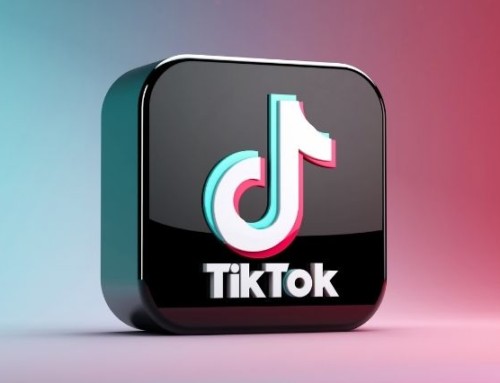Social media calendars are a great way to make sure you’re staying on track with your small business social media marketing efforts. With so many different platforms, it can be difficult to keep track of which ones to post on which days at what time, let alone what the messaging should be. Don’t wing it! Take the time to create a social media calendar so that you know your efforts are making a difference. Not sure where to start? Here’s a step-by-step guide to creating a social media calendar. Follow these steps, and you’ll have yourself a powerful tool in no time!
Start with a good foundation for a calendar
While there are many great tools for creating all kinds of calendars, the humble Excel spreadsheet is a great place to start when creating a social media calendar. You can either create one yourself by creating an Excel workbook, with 12 tabs (one for each month) then within each tab, break the page out by weeks and social platforms. Not an Excel person or prefer to use a tool someone else has already gone through the pains of creating? Check out CoSchedule’s social media calendar. You can download the template and then customize it as you need to. Don’t forget to add special events, holidays, product launches, etc. in case you need event-specific content as that day nears.
 Decide which social platforms you’ll be posting to
Decide which social platforms you’ll be posting to
Refer to your marketing strategy to determine which social media platforms you will be posting to. It’s important to understand which platforms make the most sense; more is not always better! If you haven’t already researched this, take the time to do so before continuing. Learn which platforms your target audience is on. That’s where you want to spend your time. If you’re unsure how to determine which platforms make sense, try engaging the services of a small business marketing consultant to help you. Once you have those platforms determined, plug them into your social media calendar.
Identify content you’ll be sharing
Now that you have the fundamentals of your calendar created (monthly tabs, social media platforms, weeks and days), start thinking about what kind of content you’ll be posting. Will you only post your own original content? Will you be sharing industry news? Company news? Really think about this and what kind of content you envision sharing with your audience that they will like, read, and share. If you’re not sure what that is, take the time to learn what types of content works best on social media and base your efforts on that as a starting point. Think not only about what format the content will be in (blog posts, articles, videos, infographics, images, etc.) but how you’ll communicate in that content. Educational? Informative? Funny? You want your company’s personality to shine through here, so be genuine in your efforts. Create content that reflects who you are as a company and what your clients care about.
Not sure what kind of content resonates with your audience? You can look at several of your existing social channel’s analytics to find out. Facebook, for example, provides insights on reach, audience, page views and actions for content you’ve posted. If you’re brand new to social media and don’t have this data, ask your clients what kind of content they read. Study industry leaders to see what content they share. Look at your competitors. Quality content is important here, so be sure you get this right for the best engagement! And don’t forget to source great industry content, not just content you create. Remember, content marketing is about being helpful; provide good, useful information to your readers and they will keep coming back for more!
Determine who is going to create your content
You’ve got a list of great content ideas: who is going to create it? Get a list of anyone who can create content for you and have that list handy; you’re going to need it. Don’t limit that list to “writers”; keep in mind that your content needs images, graphics and perhaps even video. Do you have resources for that? Make a list of who is capable of what kind of content creation so when you start populating your calendar, you have all areas of creation covered.
Identify who will be posting content
Although this seems like a simple step, you’d be surprised how quickly social media efforts can get away from you if there are too many (or not enough!) cooks in the kitchen! Decide who is going to be posting your social media content for you. Will they handle all your channels, or will you have a person dedicated to each channel? Make sure to decide that now. Make sure they have proper access to your social media accounts.
Decide when you should post to each platform
Again, many social media platforms will show you what kind of engagement you’re getting on which days at what time. Don’t have that data? Check out Sprout Social’s Best Times to Post on Social Media: A Complete Guide article for some good guidelines.
 Time to populate that calendar
Time to populate that calendar
Time to take all that great data and plug it into an actual schedule! Fill in the calendar with links to relevant content (yours or someone else’s), resources you want to share and your own articles or posts. These social messages will ensure you’re providing your audience with smart, useful content and give them a reason to follow you. Don’t forget to reference those special days such as holidays, product launches, etc. Depending on what it is, you may want to do more than one post on the content piece.
After you plug in the content, assign to the person who will write that content. Assign someone to find the imagery or graphic if it’s not the same person. Determine a draft date, and a posting date. It’s also a good idea to have someone who didn’t create the content do a quick review for typos, etc. Last, assign to whoever is going to actually post on the social media channels.
Then measure
If you’re new to social media, and/or content creation, it’s imperative to measure your results! The two main ways to do this is through the reporting features offered by the social channels, and through Google Analytics. The social media channels will tell you about engagement, etc. within the channel. Google Analytics will tell you what traffic came from which social media channel and how they engaged on your website. Watch and see how each channel performs, which content performs, and on which days. Social media is a dynamic process, to measure to ensure long-term success.
Social media is a powerful tool for small businesses. A social media calendar will keep you organized, on track, and give you the ability to measure your results. Following this step by step guide will give you a good foundation for your social media efforts.
- Marketing Tactics That Your Small Business Can Do for Free - January 10, 2024
- How to Create Images for Your Small Business Website - December 6, 2023
- How Small Businesses Benefit from Referrals - November 6, 2023





